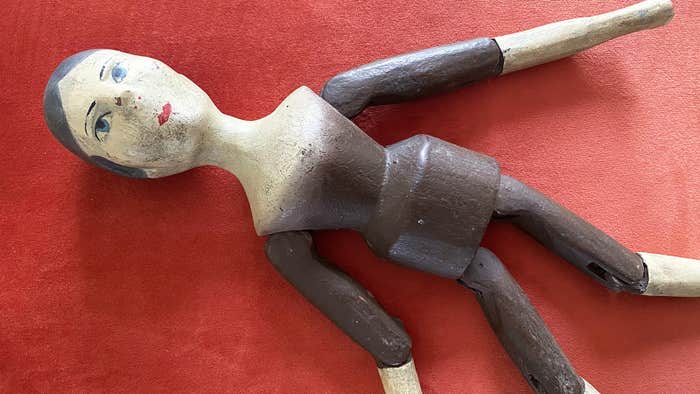It begins with a simulated hurricane in 1990 to test what kind of damage such gusts make to a forest. Besides the wind in the trees to toss seeds, what does a forest need to sustain itself over time? This is the question that Audrey Barker Plotkin asks while meandering through the Harvard Forest.
As the forest’s Senior Scientist, as well as Site and Research Manager, Barker Plotkin is both attentive to the individual lives of trees and intent on maintaining a holistic perspective, understanding the relationships among each trunk, each spread of boughs, and every hectare of soil that gives her woodland workshop its unique personality. “What I work on is how forests change over time, and, especially, what happens when something comes along to change a forest in a major way,” such as a torrid rain, a lightning strike, a hurricane. These elements precipitate the trickle-down effects of the ecosystem’s reactions, as chemical compounds die, but are also reborn. “Death and resurrection is…at the heart of my work,” Barker Plotkin tells us. “The forest is really resilient. It will bounce back from almost anything…But on the other hand, there’s a lot of change, and that’s not easy for people, including me.”
In a new course that Poetry in America produced for teachers, “Earth, Sea, Sky,” Barker Plotkin was asked to meld her perspective in forestry science to that of Mary Oliver’s poem “The Oak Tree at the Entrance to Blackwater Pond.”
The Oak Tree at the Entrance to Blackwater Pond
MARY OLIVER
Every day
on my way to the pond
I pass the lightning-felled,
chesty,
hundred-fingered, black oak
which, summers ago,
swam forward when the storm
laid one lean yellow wand against it, smoking it open
to its rosy heart.
It dropped down
in a veil of rain,
in a cloud of sap and fire,
and became what it has been ever since—
a black boat
floating
in the tossing leaves of summer,
like the coffin of Osiris
descending
upon the cloudy Nile.
But, listen, I’m tired of that brazen promise:
death and resurrection.
I’m tired of hearing how the nitrogens will return
to the earth again,
through the hinterland of patience—
how the mushrooms and the yeasts
will arrive in the wind—
how they’ll anchor the pearls of their bodies and begin
to gnaw through the darkness
like wolves at bones—
what I loved, I mean, was that tree—
tree of the moment—tree of my own sad, mortal heart—
and I don’t want to sing anymore of the way
Osiris came home at last, on a clean
and powerful ship, over
the dangerous sea, as a tall
and beautiful stranger.
The poem begins with a daily observation of the remains of a particular oak tree that was suddenly, violently struck by lightning: “Every day / on my way to the pond / I pass the lightning-felled / chesty, / hundred-fingered, black oak.” This tree “dropped down / in a veil of rain, / in a cloud of sap and fire, / and became what it has been ever since— / a black boat / floating / in the tossing leaves of summer.” Barker Plotkin tells us about the attachment that one can develop to an individual tree (“seeing a tree that I’ve walked by…for a decade suddenly fall…I’m going to miss that tree”), an attachment which Oliver’s speaker well understands. Repeatedly passing the crumpled oak each day, the speaker expresses the emotional palpitations that Barker Plotkin suggests is part of being a close observer of forests. She accentuates the observer’s inevitable sense of loss: “what I loved, I mean, was that tree— / tree of the moment—tree of my own sad, mortal heart.” This beloved tree has morphed from a living and erect state of matter into another—a vessel of decay on the forest floor.
Curiously, Oliver’s speaker compares this new form to the Egyptian God of Fertility and the Underworld, Osiris, who was killed by his jealous brother, Set. In one version of the myth, he was trapped alive and sent down the Nile, his coffin ultimately caught in a tree. Osiris remained encased in multiple layers of wood—constructed coffin, natural tree—until he died. But his wife Isis found his floating tomb, re-assembled his body, and resurrected him. Osiris represents both the beginning of life and its final stage.
Won’t hurricanes like those which Barker Plotkin investigates aid in the quick juncture from death into new life? Oliver illuminates the wind’s essential duty, “how the mushrooms and the yeasts / will arrive in the wind— / how they’ll anchor the pearls of their bodies and begin / to gnaw through the darkness / like wolves at bones.” These minute, regenerative organic processes serve as the protective remedies that preserve forests. As the research summary to Barker Plotkin’s hurricane simulation experiment notes, “the forest ecosystem has proven to be extremely resilient to damage. Very few changes were witnessed in microenvironmental conditions or biogeochemistry despite the massive changes in forest structure.”
Oliver’s speaker knows the fungi will begin their inevitable release of enzymes to break down the bark of fallen trees and subtly sift them into soil, preparing the way for new life. And yet, even with this knowledge, the speaker cannot help but feel that this process foretells an irreconcilable deprivation and indelible wound: “But, listen, I’m tired of that brazen promise: / death and resurrection. / I’m tired of hearing how the nitrogens will return / to the earth again, / through the hinterland of patience.” Realizing there is no rescue from the desperation of loss, Oliver’s speaker calls out in frustration, “and I don’t want to sing anymore of the way // Osiris came home at last, on a clean / and powerful ship, over / the dangerous sea, as a tall / and beautiful stranger.” The tree, the god, the earth will knit their forms back together, but not as they once were. Even though nature’s organic process of renewal automatically activates when a tree falls, things are forever changed. Both Oliver and Barker Plotkin identify with this deep sense of loss, as a lover might mourn the ending of closeness.
Ultimately, much like immortal souls, a collection of trees is built on a kinship of alliances under and above the earth, and we are reminded that humans have a role in how well the forest survives. Despite the fact that a fallen tree decomposes, with the aid of wind and our care for forests’ health, each tree may return as a “beautiful stranger” to stand among the trunks of their ancestors.
Lead Image: Stockeee/Shutterstock































